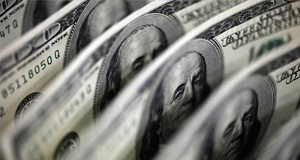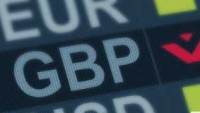 Volatility sweeps financial markets
Volatility sweeps financial markets
Currency markets had a volatile start to the new year as risk sentiment took another turn for the worse in the first two days of trading of 2019. The Japanese yen soared across the board as investors fled to safety on heightened concerns about the global growth outlook for the coming year. The surge in the safe-haven yen came after tech giant, Apple Inc., cut its revenue guidance for the first quarter on weakening sales to China. The shock profit warning sent Apple shares down by about 8% in after hours trading and added to existing worries about the health of China’s economy.
The yen immediately jumped on the news, triggering stop-losses and causing a ‘flash crash’ in all major yen crosses. The US dollar plummeted to a 9-month low of 104.96 against the yen but against other currencies, the greenback was only marginally weaker, with the dollar index easing by 0.2% to 96.60 at the start of European trading after rallying strongly the previous day.
Risk barometer Aussie underperforms
The Australian dollar, which was already under pressure from poor Chinese manufacturing PMI prints this week, slumped to a 10-year low of 0.6742 versus its US counterpart, while against the yen, it fell to 73.07 – its lowest since October 2011. The aussie is sensitive to sentiment towards China and broader market risk appetite and the latest slide reflects the growing pessimism in financial markets about the global growth picture for 2019.
The euro also slid on Wednesday on disappointing manufacturing PMIs out of the Eurozone. The single currency dipped back below the $1.14 level but was slightly firmer on Thursday. The pound, however, was unable to find much positives from yesterday’s stronger-than-expected UK manufacturing PMI and rising Brexit uncertainty pushed the currency to a near 21-month low of $1.2436 earlier today.
US stock futures deep in red after Apple warning
Risk sentiment is unlikely to recover later in the day as US stock futures are pointing to losses of around 1.5% for the Dow Jones and the S&P 500 when US trading opens, while the tech-heavy Nasdaq is poised to start the day 2.5% lower following Apple’s revenue guidance downgrade.
Equities markets will probably not be able to get any boost either from the energy sector, which yesterday was lifted from a 2% jump in oil prices. A modest improvement in risk appetite helped oil prices to briefly turn higher yesterday, taking a lead from US stocks, but were back down today in line with the broader market mood. WTI was last trading 2.1% lower at $45.52, while Brent crude was off by 1.4% at $54.15 a barrel.
In other commodities, gold extended its gains to a fresh 6½-month high of $1292.32 an ounce on strong safe-haven demand.
US ISM manufacturing PMI coming up
The focus later in the day will turn to the ISM manufacturing PMI for December (15:00 GMT) out of the US. After the dismal manufacturing PMIs out of Asia and Europe this week, a poor reading for the US would be seen as further evidence of the deteriorating global economic backdrop, with the yen likely to again be the main beneficiary of any fresh risk averse moves.
However, it’s possible traders might decide to wait until tomorrow’s key risk events before making any large best. The US jobs report for December will be watched closely for fresh clues on the state of the US labour market. But the bigger highlight could come from Fed Chairman Jerome Powell and his latest views on the economy when he participates in a panel discussion in Atlanta with former Fed chairs.

Origin: XM













